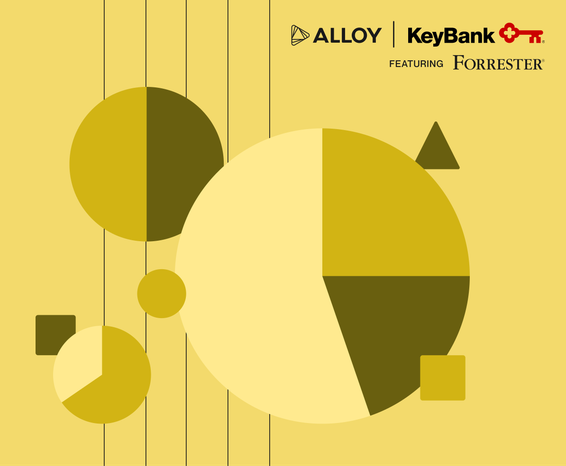Share
Banks have a friction challenge
Apr 16, 2025
Striking the right balance between a great experience and risk prevention is all about finding the right level of friction
It’s not really a secret that I’m always thinking about fraud. After all, I’ve spent the last 10 years building products to help banks and fintechs overcome the rising issue of fraud. Still, sometimes, the most enlightening moments come from reflecting on my own personal banking experiences.
I had one of these “aha moments” after I got married and opened up a joint bank account with my wife.
Opening up the account seemed easy enough at the time. We actually went in-branch (call us old-fashioned) and didn’t have any trouble onboarding. That’s unsurprising because we were sitting in front of bank representatives with valid IDs, a marriage certificate, etc.
However, about a week later, when we had trouble trying to send rent to our landlord, I was reminded of an important reality in banking: your overall customer experience is only as good as your fraud processes. If your fraud processes add too much friction, they completely undermine your customer experience. If your fraud processes don’t add enough friction, and your customers become victims of fraud, that’s also a horrible customer experience.
In my case, my new bank’s fraud processes added so much friction, that I had to get on the phone with a customer service rep six times (YES, 6X) in order to finally transfer my rent payment to my landlord.
Come with me on a customer journey…
Let’s take a look at all the steps my bank took me through to pay my rent and some of my reactions to them.
Step 1
First, I logged into my banking app, selected transfer money, and chose a peer-to-peer (P2P) payment method. So far, so good…
Experience Ranking: 👍
Step 2
Since this was my first time transferring money to my landlord from this new account, I had to add my landlord as a new payee. My landlord already had an account with this P2P app, so this step was relatively easy once I found out her information.
Experience Ranking: 👍
Step 3
Next, I tried to send my rent payment and was notified that I have a $500 limit for new payees. Unfortunately, that is less than my NYC rent (surprising, I know!).
Experience Ranking: 👎
Step 4
I decided to go ahead and send $500 of my total rent via the P2P payment method because they signaled that once I established a payment history with a payee, my payment limits to that payee would increase over time. At this point, I was still hoping that this method would be a viable option to pay my rent in the future…
After I tried sending the $500 payment, they showed me a “don’t get scammed” notification. I actually really like this from a UX perspective. It gives the customer a second chance to really think and verify they are sending money to the right person.
Experience Ranking: ❤️❤️
Step 5
Here’s where things took a turn. After I selected confirm from the previous notification, a notification popped up that said I needed to call to verify my identity before they would send the payment. This had me confused. Why is this necessary? I was logged into the bank app already. Was it because of the P2P app? So many questions, so little answers…
Experience Ranking: 👎 👎
Step 6
After I called to verify my identity, they made me call again to get a one-time password (OTP) before I could actually send the $500. Why was this necessary when I just talked to them on the phone? Why couldn’t I get this via text or the app? Why would calling be the only choice when there are better, more seamless ways??
Despite feeling unnecessary, I called, got the OTP, and then sent the $500 via the P2P app.
Experience Ranking: 👎👎👎
Step 7
Then, I noticed they had the wrong phone number on file. Could I update it in the app? Nope! I had to call in to update it!
Experience Ranking: 👎👎👎
Step 8
I might have finally successfully sent $500, but don’t forget that I still had the rest of my rent to pay! I decided the best way to send the rest of the money would be to wire it to my landlord. As I tried to figure out how to send a wire through my app, I learned that I needed to call my bank to enroll in wires…Why? Nevertheless, I persisted and called to enroll.
Experience Ranking: 👎👎👎👎
Step 9
For those counting at home, I’ve now called four times, all to try to pay my rent. But it doesn’t stop there! After I enrolled in wire services, I was alerted I had to call in again to get another OTP before I could send a wire!
Experience Ranking: 🤯🤯😭😭
Step 10
After getting the OTP, I sent the wire. Okay, I’m finally done now, right?
Experience Ranking: 🥲
Step 11
PSYCHE! The next day, the transaction was flagged by the fraud department. I had to (you guessed it) call the bank to answer some questions (like my debit card and pin, social security number, etc.) to get it approved.
Experience Ranking: 🫠🫠🫠🫠🫠🫠🫠🫠
Why is this a hard problem to solve?
As frustrating as my experience was, I can really understand why financial institutions struggle to balance fraud prevention with providing a good customer experience. It’s not an easy equation to solve.
On one hand, preventing fraud is a good customer experience: I think most would agree that a little bit of friction is better than getting your whole bank account drained by a scammer. However, if the friction goes overboard, then the customer experience diminishes. In fraud prevention, it’s all about figuring out the right amount of friction to add, when to add it, how to add it, and which customers to add it for.
At the same time, fraudsters are getting smarter, bolder, and have more funding than they’ve ever had before — which they are using to invest in new technology and develop new attack tactics. And as bad actors get better at committing fraud, tackling this issue is even more challenging. Federal Trade Commission (FTC) data shows that consumers lost over $12.5 billion to scams and fraud in 2024, a 25% increase from the year prior. So there’s a lot of pressure for banks to do what they can to help their customers avoid being victims of fraud, both from a customer experience standpoint and from a regulatory standpoint.
Key themes
When it was all said and done, I called six times over the course of two days to try to pay my rent. Granted, I was a new customer for this bank, but this still should not have been as complicated as they made it be. Here are a few themes it made me think about:
- A disjointed onboarding process. I signed up for this account in person. Why were there separate onboarding processes when I was enrolling in their integrated P2P payment method and wire service? An omnichannel approach to onboarding could have been a lifesaver here.
- An over-reliance on phone calls as step-up verifications. Call me a millennial, but I don’t want to talk to customer service representatives on the phone if I don’t have to. Could other forms of step-up verification be used instead of having me call? Exploring other forms of step-up verification and building out different workflows for different use cases could have removed friction from the process.
- Siloed systems. It’s clear that the systems they use for in-branch, online, wire transfers, and P2P payments don’t talk to each other. If they had a holistic system that integrated all of those moving pieces, it could have eliminated a lot of customer friction.
Final thoughts
Across all industries, consumers are increasingly demanding seamless, instant, and fully digital customer experiences. Banks know this and are building apps with UX in mind. However, many overlook how their fraud processes impact customer experience, which is a huge mistake because the two go hand in hand. You can’t have a seamless digital banking experience without a seamless fraud prevention process.




